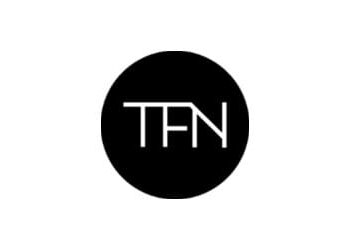In the current highly regulated environment of health and social care, home care agencies are continually challenged to deliver safe, effective and person-centred care. A significant focus of scrutiny from the Care Quality Commission (CQC), as well as other regulators, is the safe management of medications.
Home care providers frequently encounter difficulties complying with CQC medication regulations, stemming from systemic, operational and regulatory obstacles. Such shortcomings not only jeopardise the safety of service users but also expose providers to potential enforcement actions.
This is where Electronic Medication Administration Records (eMAR) systems come in, transforming how agencies manage, monitor and evidence medication support.
What is eMAR?
eMAR stands for Electronic Medication Administration Record. It replaces traditional paper MAR charts with a digital system that records when medication is administered, missed or refused, along with key details like dosage, route of administration and notes from care staff. But more than just a digital log, eMAR offers automated alerts, oversight and reporting tools that can make all the difference during a CQC inspection.
Why CQC inspectors value eMAR
CQC inspections are placing greater emphasis on digital record-keeping. Inspectors seek systems that guarantee safe administration of medication, maintain accurate records and facilitate effective team communication. The eMAR system addresses all of these needs and more importantly, provides transparent evidence of good practices, an essential requirement that every home care provider should be prepared to demonstrate.
Key areas where providers fall short
Systemic and regulatory challenges along with failures in the safe administration of medications can result in violations of the Key Questions of Safe and Well-led during CQC inspections. A lack of a robust process, coupled with inadequate monitoring and auditing exacerbates compliance difficulties.
Shortfalls:
- Governance and leadership issues – weak oversight, lack of learning from incidents
- Medication administration errors – missed doses, wrong dose, poor PRN management
- Ordering and supply chain issues – delayed or incorrect medication deliveries
- Controlled drugs management – inadequate oversight, untimely referrals, misuse
- Record keeping and documentation – incomplete/inaccurate MARs, poor documentation
How does eMAR supports CQC compliance
1. Safe: Are people protected from abuse and avoidable harm?
- Accurate medication records: eMAR reduces the risk of transcription errors or missed doses by guiding carers through the correct administration process
- Alerts and reminders: The integrated prompts assist staff in remembering medication schedules, thereby minimising the risk of human error
- Audit trails: Every action is meticulously time-stamped and logged, establishing a transparent and traceable history of medication activity
2. Effective: Is medication administration and management effective, achieving good outcomes?
- Up-to-date medication information: eMAR integrates with care plans, ensuring carers have access to the latest medication information
- Consistent documentation: Ensures continuity of care across different carers
- Decision support: eMAR offers detailed information thereby supporting carers to make informed decisions
3. Caring: Do staff involve and treat people with compassion, kindness, dignity and respect?
- Personalised care notes: Carers can document notes alongside each medication entry, providing valuable context and enhancing communication with the broader care team
- Better time management: eMAR saves time on paperwork, allowing carers to spend more time focusing on the individual’s needs.
4. Responsive: Is the service responsive to people’s needs?
- Real-time monitoring: Managers and supervisors can quickly identify issues such as missed doses or medication refusals, allowing for timely intervention
- Customisable alerts: Tailored to the needs of each service user
- Flexible reporting: eMAR simplifies the process of retrieving data regarding medication incidents or trends, thereby facilitating responsive care planning
5. Well-led: Is the leadership team fostering a culture of high-quality, person-centred care?
- Visibility and oversight: Managers gain comprehensive insights into medication compliance throughout the service
- Data-driven decision-making: eMAR systems produce reports that assist in pinpointing training requirements, care deficiencies, or systemic challenges
- Evidence for inspections: During CQC inspections, eMAR offers clear documentation and showcases a steadfast commitment to safety and quality
Adopting eMAR is more than a digital upgrade it represents a significant advancement towards improved compliance, enhanced care and superior outcomes. For home care providers aiming to uphold a positive CQC rating, particularly in the domains of Safe and Well-led, eMAR proves to be an invaluable asset in your compliance toolkit.
If you have yet to adopt eMAR, now is the perfect opportunity to discover how this innovative technology can elevate the safety, efficiency, and accountability of your services.
Need help implementing eMAR in your organisation?
CarelineLive offers tailored digital care solutions, including eMAR training and support. Contact us today to learn more.




